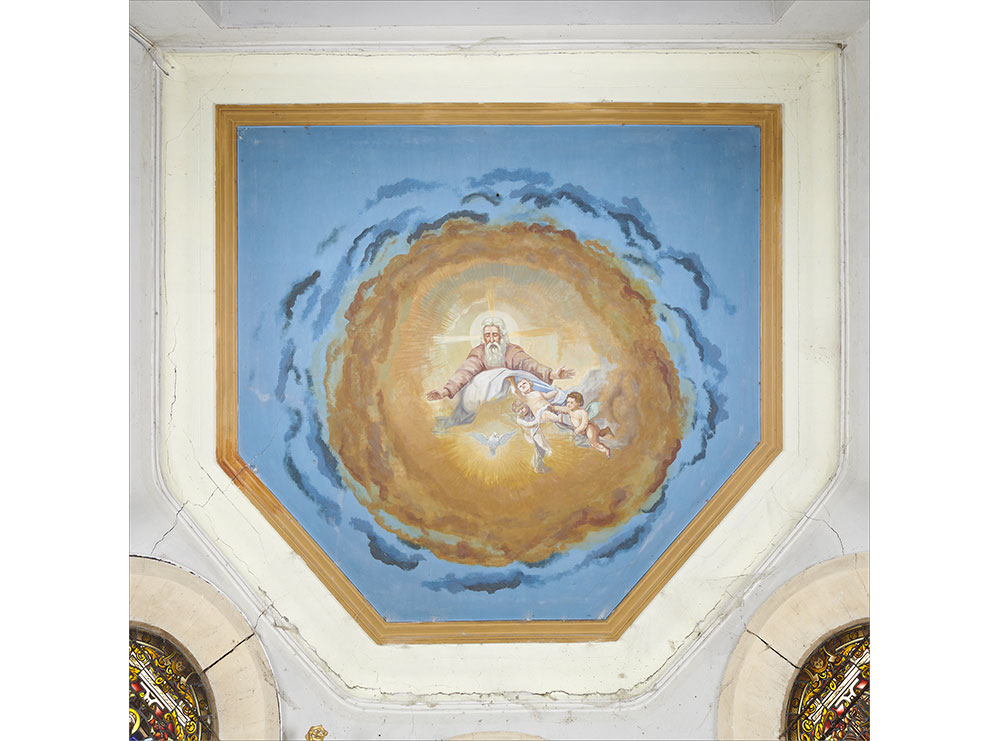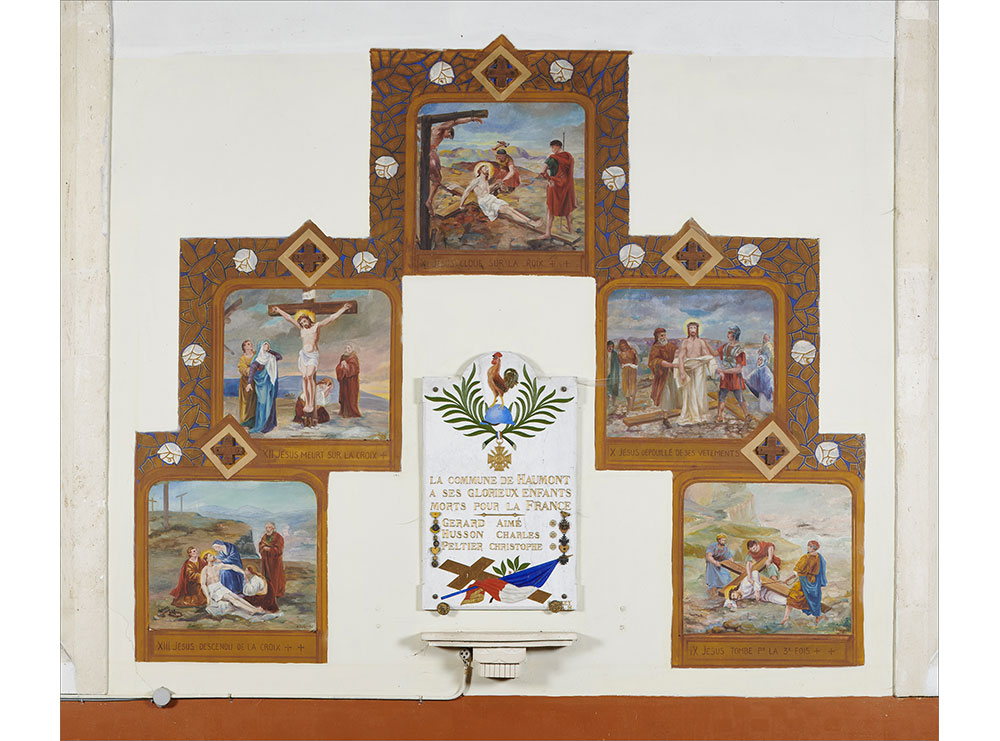Haumont-lès-Lachaussée, Church of St Anne
Rebuilt in 1928 by the entrepreneur Émile Receveur under the direction of the architect René Marson, the church of St Anne featured painted decoration and furniture created by Duilio Donzelli from 1929 onwards. The monumental painting has partly disappeared, and is covered by whitewash in the nave and on the walls of the choir, but the most interesting features survive. The starry vault over the cornice around the ceiling of the nave and the marble imitations, including the niches behind the statues on the side altars, can sometimes be seen.
The work done by the Donzellis in Haumont is especially well known thanks to the many archive documents that document it: estimates, letters, furniture plans and contracts were kept and serve as valuable sources. The church of St Anne was among Donzelli’s first major projects in the Meuse region, in 1929-1930, after his initial work in Lacroix-sur-Meuse: the artist created all of the decoration (choir, nave and Way of the Cross on canvas) and the furniture. Although the initial plan only included the representation of the Holy Spirit, the ceiling of the choir is decorated with a Trinity in which the Son is shown as an infant, which is somewhat atypical, though not unique.
The furniture consists of a high altar, two side altars, baptismal fonts and stoups. The altars were cut into Savonnières stone and sculpted panels depicting the Nativity and the Crucifixion were added to the high altar. These panels can be compared with those of the high altar of Trésauvaux, which were also sculpted by Donzelli in 1930 and portray the Annunciation and the Lamentation over the Body of Christ.
The most original feature of the whole is the Way of the Cross: the fourteen stations were painted on canvas and then placed in the frames intended for them on the walls of the nave. In an Italianising style with omnipresent architectural features or landscapes and the work on the drapery, Donzelli created paintings featuring several figures to illustrate the Passion of Christ, from the time when he was sentenced to death to the time when he was laid in the tomb.
In this church, Duilio showed the extent of his talent with his mastery of the techniques of stone cutting, sculpture, painting on canvas and monumental painting.





